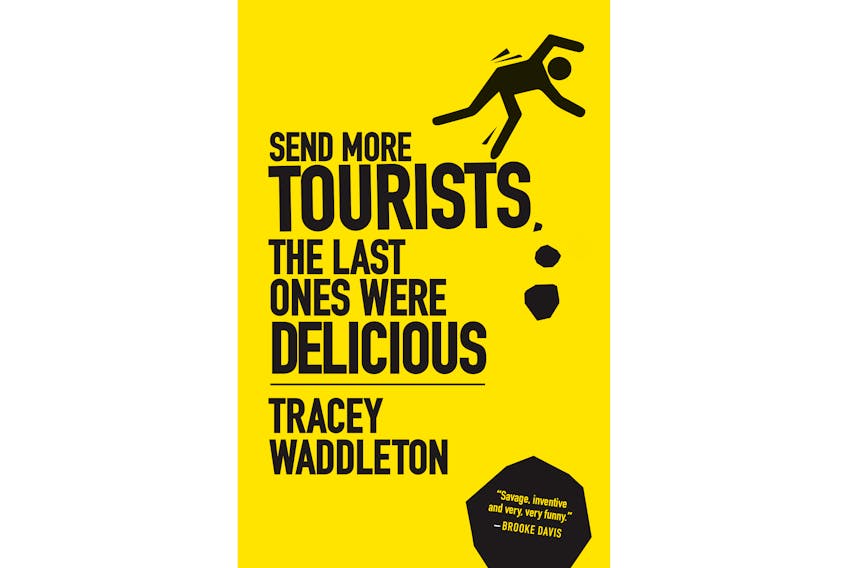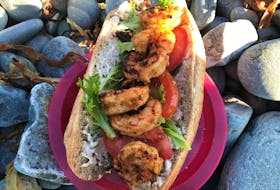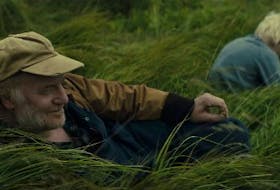Tracey Waddleton’s debut collection contains 25 short stories. Their range is incredible, not just in structure — some are only two pages long — but in character, predicament, consequences and atmosphere.

Even the shift between the first two stories is deft and indicative. “It Lunged” is a short piece, a two-hander exchange that resembles a monologue (there are no quotation marks), dialogue back and forth between a girl and an entity that has slid out from under her bed.
“Old Ben Walsh” is an accounting of how a teenage girl, Millie, dissolves and self-destructs following an assault, seen through the eyes of her younger sibling. There’s actually a resonance between the themes, but the style pivots from one kind of nightmare to another.
The book’s title is a great tell, both of Waddleton’s wicked sense of humour, and that reading these stories takes you on a trip.
As with any journey, momentum is key. For example, in the titular story, the narrator drives, or rides with her partner, Nick, first through central Newfoundland, where they encounter an accident, a car off the road and overturned. “Does anybody have water, and we do, a whole case. A first-aid kit, too, and shock blankets. The woman sits in the front seat and I try to talk to her when they go back for her husband. He is dangling upside down in the driver’s seat, they say, but talking.” Next, they are on the highway outside Montreal, lost. Then she’s alone, heading for a ferry, and decides (“It is the Prius’s fault but it’s easy to point fingers”) to pass a long line of cars — only to spot two tractor trailers side by side heading her way. “I creep past two of the cars. As they see me, they start to break, to slow. They know my predicament instantly. They are alarmed, all eyes. I creep along the third car and the driver is yelling as if I cannot see. I see, I am nodding to show him. I see.”
Many of the stories take place in liminal realms. Some settings are dressed with authentic, even gritty, details — groceries from Sobeys, lingerie from La Senza, mocha lattes — as with the unnamed protagonist in “Riding With Maurice” who talks himself through his daily tasks: “Maurice is dating this girl and here’s her picture. If you buy ten boxes of Kraft Dinner and two cartons of milk and a tub of butter, you can eat all week without surprises and you can just use the microwaveable bowl. You can throw the dishes out with the trash and then you don’t have to wash them. Maurice wants to marry this girl, he says.”
Others slip into surreal, even spooky, spaces, such as “The Lottery,” where lovers Sidney and Ross play Kafkaesque games: “Wow,” Sidney’s friend Val muses. “I wonder what that’s called.”
Even straightforward narratives dip their toes into the dark. Carrie, in “Russia,” dreams of visiting that country. She has great determination: “I finish the ‘Vagabond’s Guide to Travelling the World’ and it occurs to me that, if I’m going to travel, it would be best if I knew how to swim. The next morning, I sign up for lessons.” Her mother think’s the plan is bonkers. “Russia is known for its vodka, I say. I bet I could bring some back for you. Hmm, she says into her glass. That would be nice, honey.” Carrie works minimum wage shifts (“One large double-double and a tea with one sweetener…no, not that kind, the blue kind.”) But it’s not enough money. Is her solution to this a real answer, or a fateful diversion?
Of all the pieces, “Three Men Walk into a Bank,” a kind of mystic, vicious bank robbery, is the only one that doesn’t quite land. The perspective alternates between the three, known as The First/Second/Third Man: “The First Man/Sees The Third Man, and that is his cue.” It’s not the violence that’s off-putting; many of the stories have threats, cuts, even murder. But for some reason, it’s hard to reckon what the stakes are here, and where our loyalties should lie.
“White Cat” is perhaps my favourite story. Here’s an example of Waddleton setting out her characters in pithy ringing lines. “Jean tosses her hair. She has a spray tan and she is ordering the salad.”
This follows two friends having dinner in a restaurant but it’s also about loss and connection without ever being too “on.” It’s also one of the gentler pieces, maybe, though still packed with intention and detail: “I went to turn on the patio light and (White Cat) was gone. Maybe he’d been gone a while. I wasn’t sure. Then the phone rang and it was my mother. She said come over to the hospital and bring Dad some oranges.”
Joan Sullivan is editor of Newfoundland Quarterly magazine. She reviews both fiction and non-fiction for The Telegram
RELATED:









